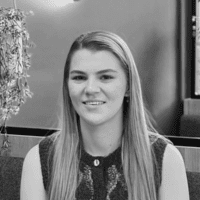
Maximising ROAS: Key PPC strategies for success

Maximising ROAS (Return on ad spend) is essential for businesses looking to optimise their paid advertising efforts and achieve a return on profit. To improve ROAS, companies often work with advertising agencies specialising in paid advertising. The reason for this is that marketing agencies specialise in performance and can dedicate set hours to improving and maintaining a successful ROAS.
Before you work on maximising your ROAS, it is important to understand the business’s goals and profitability depending on the industry. This is because you need to set realistic ROAS targets before you work on maximising ROAS, otherwise, you will not know what you are working towards.
There are countless ways to maximise ROAS, but overall strategies must be optimised by refining targeting, enhancing ad creative and using smart bidding strategies.
What is ROAS & how is it calculated?
ROAS stands for return on advertising spend. It is a core metric that measures the revenue generated for every £ spent on advertising. There is no set figure for ROAS; this is all dependent on industry and wider business goals.
ROAS = (Revenue from Ads)/(Cost from Ads)
This is a key metric in paid advertising because it helps businesses determine how effectively their advertising spend generates revenue. There are several reasons why ROAS is important:
- ROAS is a great metric to evaluate the performance of campaigns. A high ROAS means the ad campaign is profitable, while a low ROAS indicates the need for adjustments to improve efficiency.
- ROAS helps inform budget decisions. You can easily work out how to weigh the budget between channels, campaigns and ads with ROAS. This also gives advertisers justification for their budget decisions.
- ROAS gives insights into what works and what doesn’t. This further informs optimisation decisions.
- When campaigns are displaying a strong and consistent ROAS, it shows a scaling opportunity. Advertisers can use the performance to their advantage.
Factors that influence ROAS
If you work in advertising, you will be familiar with how ROAS fluctuates and the reasons why. Several factors can influence ROAS, including:
- Targeting: Utilising the right audience signals and optimising all platform targeting ensures you are reaching the right users.
- Profit margin: If you are selling a high-ticket item, you are likely to have a greater return. Whereas, if the product is low value, the return can often be lower.
- Ad type: Depending on the industry, the type of ads you decide to push will affect ROAS. For example, Google Performance Max covers a lot of the Google Network within one channel, including shopping and search, which are two top-converting channels which are placed at the bottom of the marketing funnel.
- Ad copy: If ad copy is not frequently optimised, users will not find the ads engaging and relevant.
- Ad creative: Depending on the industry, you should have engaging creative, whether this is lifestyle or product-focused. This includes clear messaging and the use of a relevant CTA depending on where in the funnel you are appealing to. E.g. Shop Now, Learn More etc.
- Bidding Strategies: To optimise towards ROAS, you should select a conversion-value bid strategy (Maximise Conversion Value). You can then set a target ROAS to optimise the ad spend towards users who are likely to convert to your target ROAS.
- Campaign Maintenance: Daily maintenance and improvements to the account to keep performance optimal.
All the above points help the likelihood of users converting; layering all the points together in your strategy will allow you to work towards a positive ROAS.
ROAS Benchmarks
ROAS will never be a static figure; this all comes down to business goals, profit margins and industry. As a general figure, a good ROAS is considered to be at least 4:1, which means you are earning £4 for every £1 spent on advertising.
Below, we have included industry averages for some industries:
| Industry | Avg ROAS Benchmark | Details |
| Ecommerce | 4:1 to 10:1 | This will depend on profit margins. If a product has a small profit margin, the ROAS will be lower. Whereas, if the profit margins are higher, then the ROAS targets should be higher. |
| Retail | 3:1 to 6:1 | Retail businesses need to factor their overhead costs into the ROAS figures. The profit margins could be high, but the additional business costs need to be included. |
| Technology | 5:1 to 12:1 | This can commonly be SaaS (Software as a Service). There is often long-term customer retention in this type of industry, which keeps ROAS consistent. |
| Travel & Hospitality | 2:1 to 5:1 | This is a competitive industry which fluctuates with demand and seasonality. Customers also have a longer customer journey due to decision-making. |
| Finance & Insurance | 3:1 to 8:1 | Although financial products and services can achieve a high ROAS due to the high-value products. Customer acquisition can be costly, which affects overall return. |
| Health & Wellness | 4:1 to 8:1 | To maximise ROAS in this industry, you need to offer a unique service which keeps customers returning time and time again. |
| Beauty & Cosmetics | 3:1 to 6:1 | This industry is very dependent on the product. For example, a drug store will have a lower ROAS. Whereas, high-end department stores that stock high-end brands will have a higher ROAS. |
| Food & Beverage | 3:1 to 6:1 | This is a highly competitive industry with low profit margins. However, online D2C business can often achieve an optimal ROAS. |
| Business to Business | 5:1 to 10:1 | B2B companies often sell specific products and services which have a longer sales cycle. This impacts ROAS due to the customer journey. |
What platform should I use to achieve optimal ROAS?
Google or Microsoft Ads
These platforms work well with B2C (Business-to-consumer) businesses as customers often search for what they are looking for on Google or Bing. Therefore, we can reach users by bidding on specific keywords.
Specifically, Search and Performance Max campaigns are both lower funnel channels that will use smart bidding to reach customers who are likely to convert.
Meta
Meta shows users engaging ads across both Facebook and Instagram. Although this is a great platform for brand awareness, we also see a great return for the food, beauty and fashion industries.
Meta has recently introduced advantage shopping campaigns, which allow performance-focused advertisers to push sales.
As LinkedIn is all about job-related audience targeting, this is the perfect platform for B2B (Business-to-business) advertising. Industries that thrive on LinkedIn are manufacturers, education and financial services.
Utilising lead forms on this platform enables businesses to gain information to optimise future strategies.
Tiktok
In the UK, approximately 40% of social media users use TikTok. This is a platform that is only becoming more popular over time.
TikTok shop allows sellers and creators to showcase their products within the app. With the average user spending over 1.5 hours on the app every day, it is easy to get your product or service in front of potential customers.
Ways to increase ROAS
There are several ways to increase your ROAS, but ultimately, it all comes down to strategic optimisations, budget management and targeting.
Utilised the best targeting methods
Refine audience segmentation. This can be through keywords, interests, demographics, data sets or lookalike audiences.
Optimise your ads based on location. For example, if you are a showroom that wants appointment bookings, only show your ads within a set radius of the store.
Check the platform insights and adjust bids based on the device. If you’ve seen more users converting through a mobile device, you should bid more for these devices.
Improve the overall conversion rate
Review website landing pages to ensure that when users click on an ad, they are directed to an informative landing page. Which aligns with the business advertising goals.
Perform regular A/B tests to inform strategic decisions. These tests could be across ad copy, CTAs, creative and bidding strategies.
Enhance ad creative
Use high-quality images or videos in ads. This should showcase the business you are promoting. For example, if it is a furniture business, show the products in the creative. Or if you are pushing a service, show how the service can be used.
Videos tend to have a greater engagement rate, especially on upper funnel channels. A/B test which video lengths and sizes work best for your business and always include an end frame with compelling messaging and a CTA.
Leverage retargeting
Target users who have already engaged with your brand, this could be ad engagers, social media page engagers, website visitors, the list goes on. As these users are already familiar with your brand, it means they are more likely to convert.
Smart big strategies
All platforms are moving towards AI-powered enhancements. This uses goal-driven optimisations to effectively manage and improve performance by leveraging machine learning.
Supercharged Ads
Google has a 5-tier process that makes ads ‘supercharged’. This includes using specific factors in ad copy. These include: social proof, cost signalling, power of free, authority bias and framing. Using all these methods in the ad copy will optimise ads.
Important note: Branded activity will often have a greater ROAS when you look at results vs generic results. This is because users are already familiar with your brand, and as you own the brand, it is more cost-effective than generic targeting. This is why we always suggest spending no more than 10% of your budget on brand.
Conclusion
Overall, maximising ROAS is an ongoing process of testing, refining and optimising all aspects of your strategy. This will always be dependent on what industry you are in and what your business goals are.
It is crucial to start by targeting the right audience depending on your business goals and industry. By leveraging audience segmentation, businesses can ensure their ads are reaching the people most likely to convert. Optimising ad creatives for relevance and engagement, combined with testing different visuals, copy, and calls to action, also plays a significant role in improving performance. Additionally, refining keywords and placements, as well as utilising retargeting, ensures you’re focusing on high-intent users who are more likely to complete a purchase.
Regularly analysing campaign metrics such as click-through rates, conversion rates, and cost-per-acquisition can help identify underperforming ads, allowing for strategic adjustments such as pausing ineffective ads or reallocating budget to high-performing ones. Auditing specific landing pages for speed and conversion potential. If a user clicks through to the landing page, are they likely to convert.



